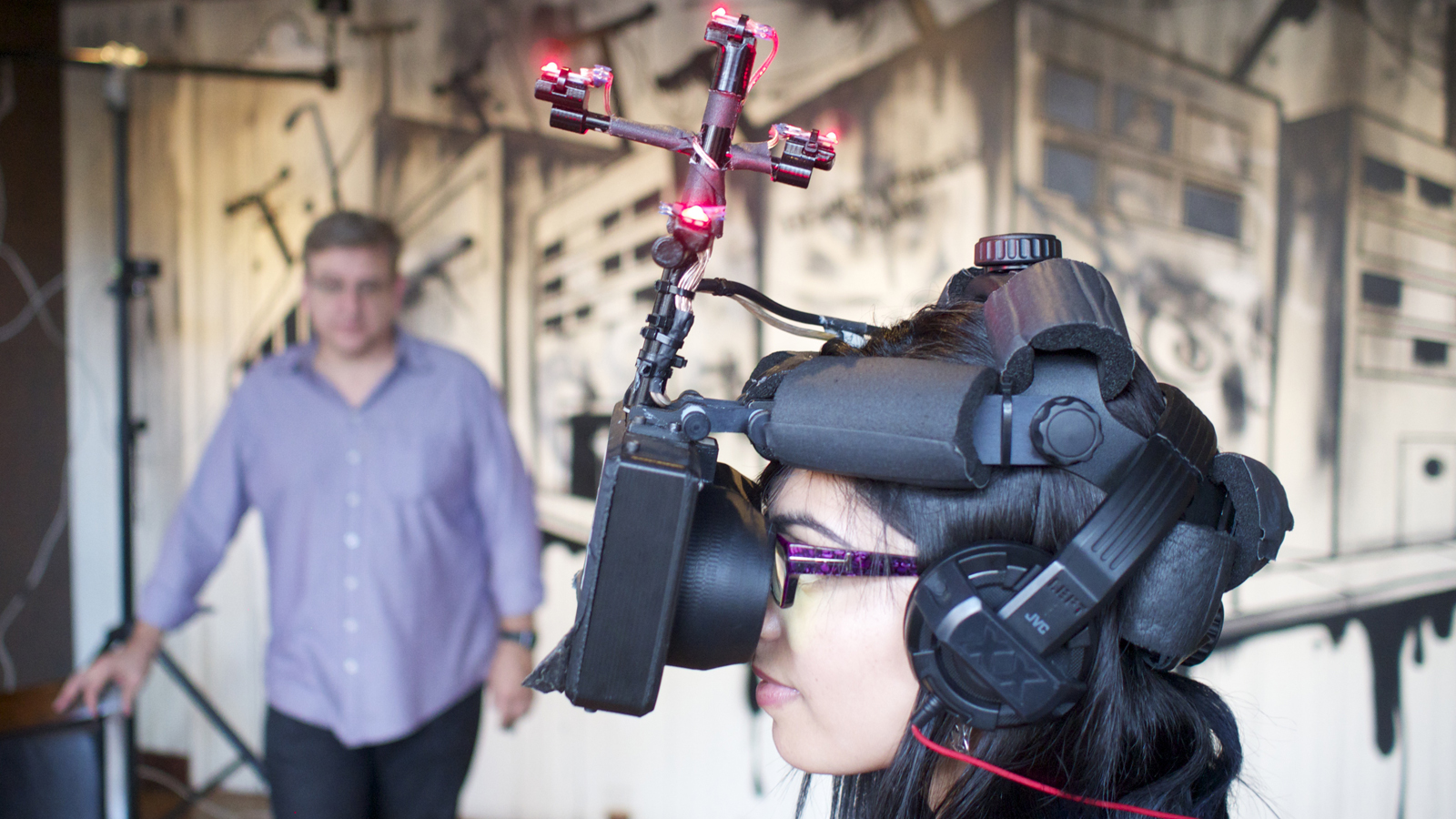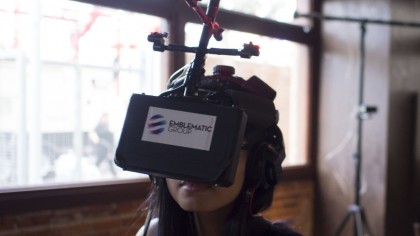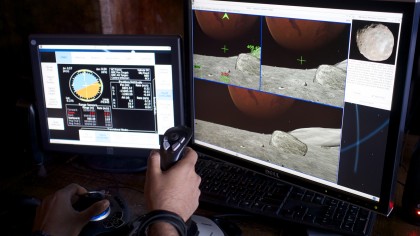Comic-Con 2015 led us deeper down the virtual reality rabbit hole
NASA, Mattel and a headset made of foam give us a glimpse of VR's future

While San Diego Comic-Con 2014 mixed cosplay with Google Glass, this year it's all about virtual reality.
Conference company Dent held a special "VR Lounge" event just outside of the San Diego Convention Center Thursday night, offering anyone interested in VR or AR [augmented reality] the chance to demo some of what's being developed in the space, including the ability to walk around the Holodeck of the Enterprise from Star Trek: The Next Generation.
While there was no formal talk at the event, the night was more about giving people a chance to get their hands on some hardware and experience for themselves what VR is really like, working as a supplement to the Comic-Con panel "Building the Holodeck" held earlier in the day.
"I'm excited by the idea of a Star Trek Holodeck scenario being made real. Totally immersive environments that are controlled by the user," said Steve Broback, co-founder of Dent.
And being Comic-Con, having a Holodeck VR experience was a no brainer for Emblamatic Group's Executive Producer and Co-Founder, Michael Licht, who said he had made the Star Trek experience "for fun."

Using Emblematic's own VR hardware, the experience included a headset connected to a battery pack in a bag that you wear while you walk around the Star Trek ship's bridge.
Licht explained that having a "walk-around" VR headset allows users to be transported to different places entirely, with a limited connection to their own reality, allowing for a more immersive experience.
Get daily insight, inspiration and deals in your inbox
Sign up for breaking news, reviews, opinion, top tech deals, and more.
However, he does believe that, "Walk-around and connected headsets will have their own places."
"For each, the experiences play differently. You can run around the house, or you can sit down at your couch for a different type of experience."
Emblematic Group, headed by journalist and documentary maker Nonny de la Peña, is currently focused on producing content that it describes as "immersive journalism," with a focus on education through immersive documentaries.
"It's a brand-new experience and we don't get that very often," Licht explained, saying that the types of uses for VR is forever expanding.
"VR isn't new," he said. "It's come and gone a few times, and now we're at a point where the technology can really support what we want to see."
He went on to say that in just a few years time, headsets will become lighter and cheaper, meaning VR will become more prevalent in our everyday lives.
(Virtual) space exploration
This is one of the reasons why NASA was also at the VR Lounge, giving guests a chance to fly a simulation of a spaceship on Phobos, which orbits around Mars.
The simulation was built as a real-case scenario for NASA, with Jason Crusan, of NASA, saying that Comic-Con is a great event to showcase the sim and allow attendees to try it for themselves.
"We believe we bring a bit of the science reality - how to bridge science fiction to science reality to implementing a space program," he said.

NASA has been using VR for over 20 years to help train astronauts in how to deal with real-case space walk scenarios.
"As our missions go further and further away from Earth, that's going to become more important," Crusan noted.
And now, with all the different types of VR headsets currently being developed, NASA no longer has to create its own custom hardware.
"Instead of doing custom one-off hardware for our own use, we can procure or buy something off the shelf and maybe do a small modification," he said.
NASA is always look to partner with hardware makers and others in the industry.
"We try to capture a lot of video and high resolution, we try to keep up with the latest trends and where the industry is going, and make all our content really available to the public and other industry vendors to utilize in heir products," Crusan said.
"We do things like GoPros going out on space walks with us," he continued. "The whole gamut of imagery we're trying to make available for others to innovate on."
"It's education, it's inspiration and it's entertainment. It's really at the core of what we do."